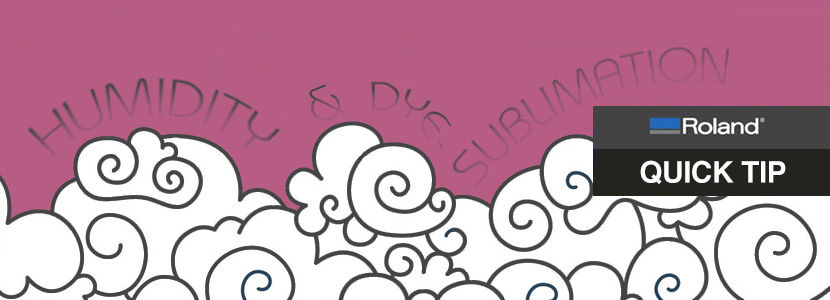by Roland DGA Product Manager of Textiles, eCommerce and Supplies, Lily Hunter
Are you seeing changes in your sublimated output, but you haven’t changed a thing? You’re using the same transfer paper, same inks, same color profile, same process time, and it’s even the same day! How can the colors and output shift from morning to afternoon?
The simple fact is that the dye-sublimation process is a gassing out process – solid ink particles turn into gas, bypassing the liquid phase. Whenever there is both moisture and heat, steam will be introduced. It’s this introduction of steam that can result in fuzzy images or changes in color.
To troubleshoot your shifting output issues, here are a few things to investigate:
What is the humidity level in the room?
- Check the humidity level in the room often.
- If the humidity level is above 50%, excess moisture in the air can interact with the dye-sublimation process to change colors and cause other issues.
How are you storing your supplies?
- You do not need to store everything in the office or a controlled environment. However, those materials (transfer paper, fabrics or rigid substrates, protective tissue paper, etc.) need to be brought into a cool, dry place at least 24 hours prior to processing.
Have you pre-heated the substrates to rid them of excess moisture?
Fabrics, paper, wood – all examples of things that will absorb and store moisture. Make sure these products are pre-heated prior to the dye-sublimation process.

